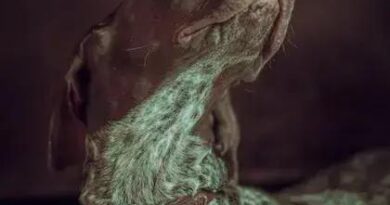What is Whisker trimming
What is Whisker Trimming?
Whisker trimming refers to the practice of cutting or shortening the whiskers of a dog. Whiskers, or vibrissae, are specialized sensory hairs that play a crucial role in a dog’s ability to navigate its environment. These long, stiff hairs are deeply embedded in the dog’s skin and are highly sensitive to touch, helping dogs gauge the width of openings and detect nearby objects. Understanding the implications of whisker trimming is essential for any dog owner.
The Purpose of Whiskers
Whiskers serve multiple purposes for dogs, including spatial awareness and environmental interaction. They help dogs sense their surroundings, especially in low-light conditions. The sensory feedback provided by whiskers allows dogs to make informed decisions about their movements, ensuring they avoid obstacles and navigate tight spaces effectively. Trimming these vital hairs can hinder a dog’s natural abilities and instincts.
Reasons for Whisker Trimming
While some pet owners may consider whisker trimming for aesthetic reasons or to prevent whiskers from getting caught in objects, it is generally discouraged by veterinarians and pet care experts. Whiskers are not just for show; they are essential for a dog’s sensory perception. Trimming them can lead to disorientation and anxiety in dogs, as they rely on these sensory tools to understand their environment.
Potential Risks of Whisker Trimming
Trimming a dog’s whiskers can pose several risks, including loss of spatial awareness and increased stress. Dogs may become more hesitant or fearful in unfamiliar environments without their whiskers, leading to behavioral changes. Additionally, the act of trimming can cause discomfort or pain if not done correctly, potentially damaging the hair follicles and leading to further complications.
Alternatives to Whisker Trimming
Instead of trimming whiskers, pet owners can focus on regular grooming practices that maintain a dog’s overall coat health without compromising their whiskers. Regular brushing and bathing can help keep a dog’s fur clean and free of tangles, ensuring that whiskers remain intact and functional. If a dog’s whiskers are excessively long or unruly, consider consulting a professional groomer for advice on how to manage them without trimming.
How to Care for Your Dog’s Whiskers
Caring for your dog’s whiskers involves ensuring they are not damaged during grooming. Avoid using harsh brushes or tools that could pull on the whiskers. Instead, use gentle grooming techniques and products specifically designed for dogs. Regularly check the condition of your dog’s whiskers and consult a veterinarian if you notice any signs of irritation or damage.
Whisker Sensitivity and Dog Behavior
Dogs rely heavily on their whiskers for communication and interaction with their environment. The sensitivity of whiskers can influence a dog’s behavior, as they use these sensory hairs to explore and understand their surroundings. A dog with trimmed whiskers may exhibit signs of confusion or anxiety, as they lose a vital tool for navigation and communication.
Veterinary Perspectives on Whisker Trimming
Veterinarians generally advise against whisker trimming due to the potential negative effects on a dog’s well-being. Many experts emphasize the importance of preserving whiskers as an integral part of a dog’s sensory system. Pet owners are encouraged to prioritize their dog’s health and comfort over cosmetic preferences when it comes to grooming practices.
Conclusion: Embracing Natural Whiskers
In summary, understanding what whisker trimming entails and its implications is crucial for responsible dog ownership. Whiskers are not merely decorative; they are essential for a dog’s sensory perception and overall well-being. By embracing the natural state of a dog’s whiskers, owners can help ensure their pets remain happy, healthy, and confident in their surroundings.




